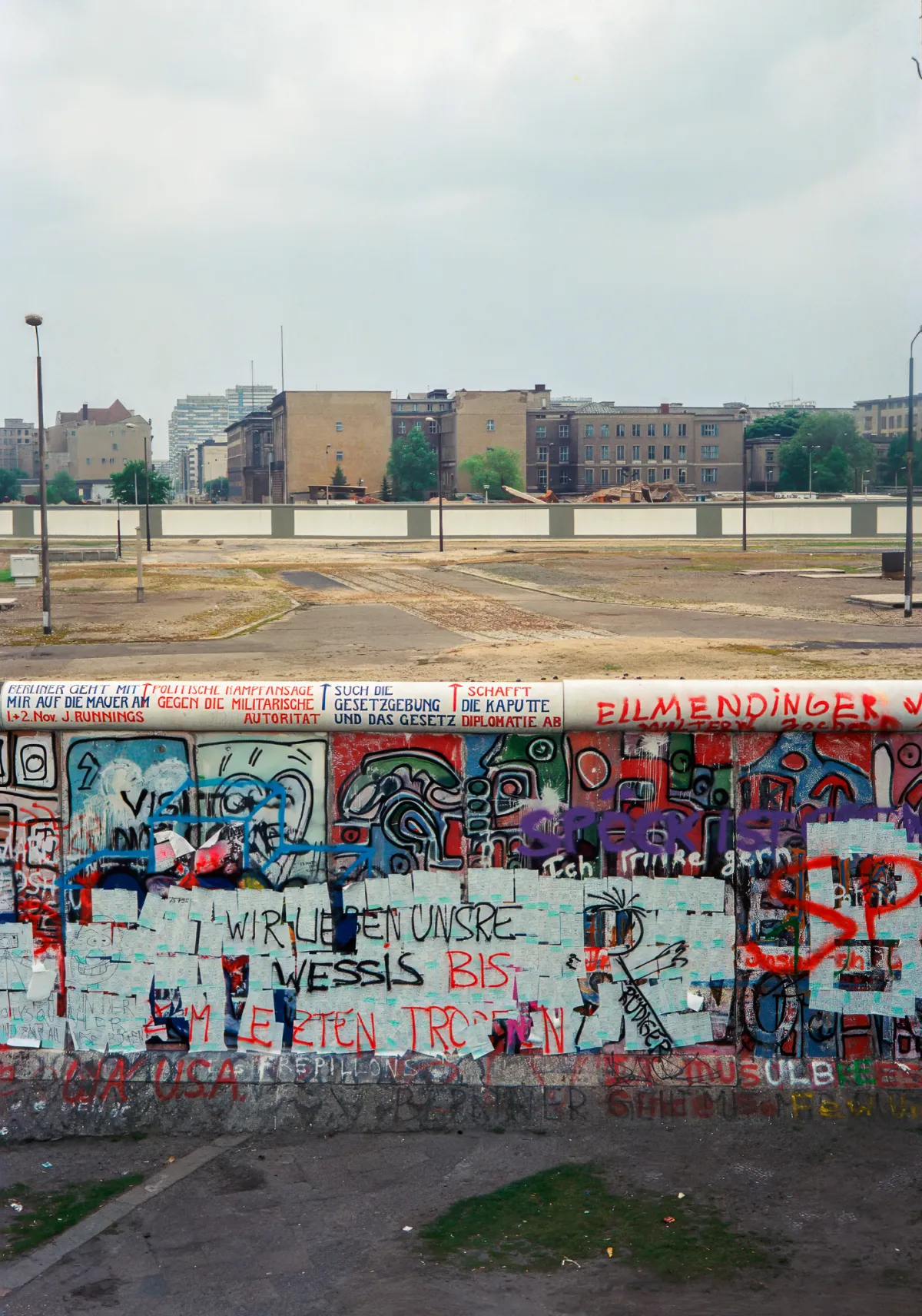One of the most significant symbols of division and reunification in modern history – the Berlin Wall – was built during the height of the Cold War, and stood tall as a physical and ideological barrier separating the people of Berlin for 28 years. Its construction began on August 13, 1961, and its eventual fall on November 9, 1989, marked a turning point in world history and a triumph of the human spirit.
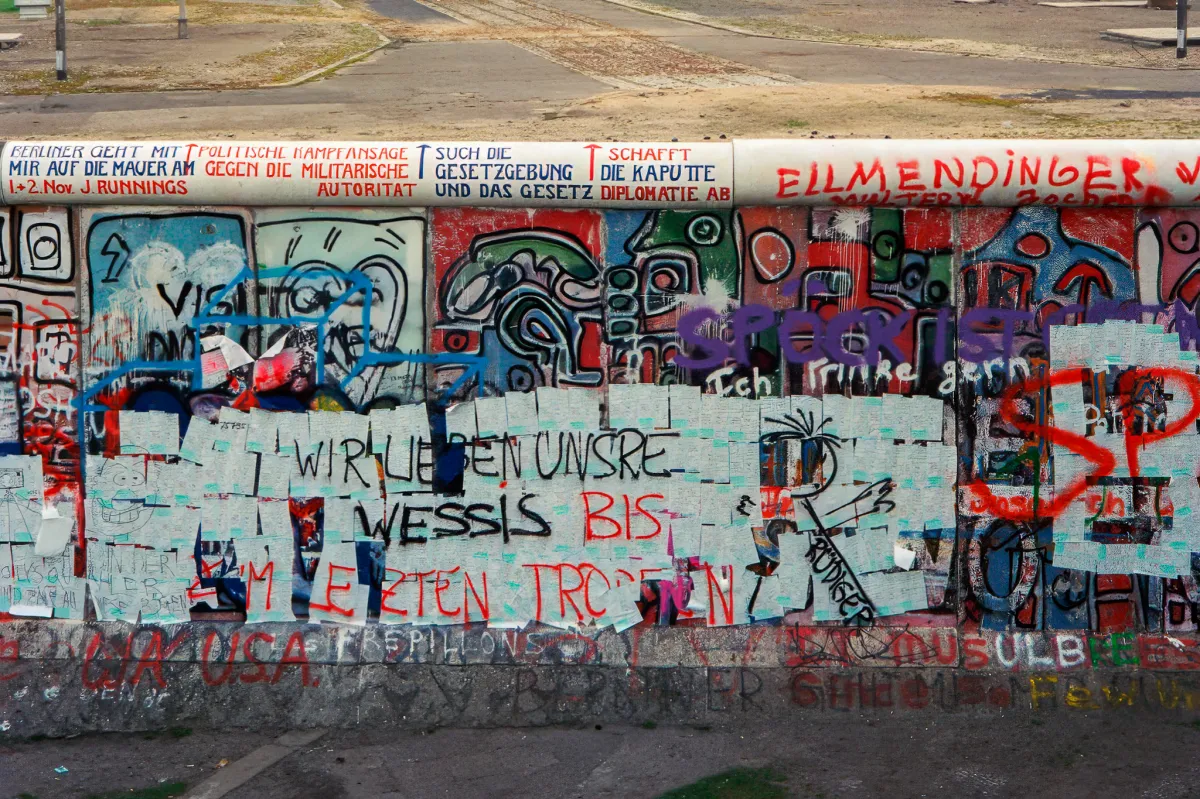
The biggest surprise was just how ‘small’ the wall actually was, I had imagined it being much taller. And another surprise. It was commonplace to look over the wall to the ‘death strip’, an area of mines, watchtowers and numerous other anti-personnel and anti-vehicle measures. However, as we gazed across at the armed guards in the watchtowers, it was pointed out to all those present that the actual border was about three metres back from the wall and the East German or Russian troops would be perfectly within their rights, legally, to shoot us if they so desired!!!
Sometimes this extra bit of East Berlin was marked in some way, but often it was not. Fortunately, no ‘gazers’ were ever shot.
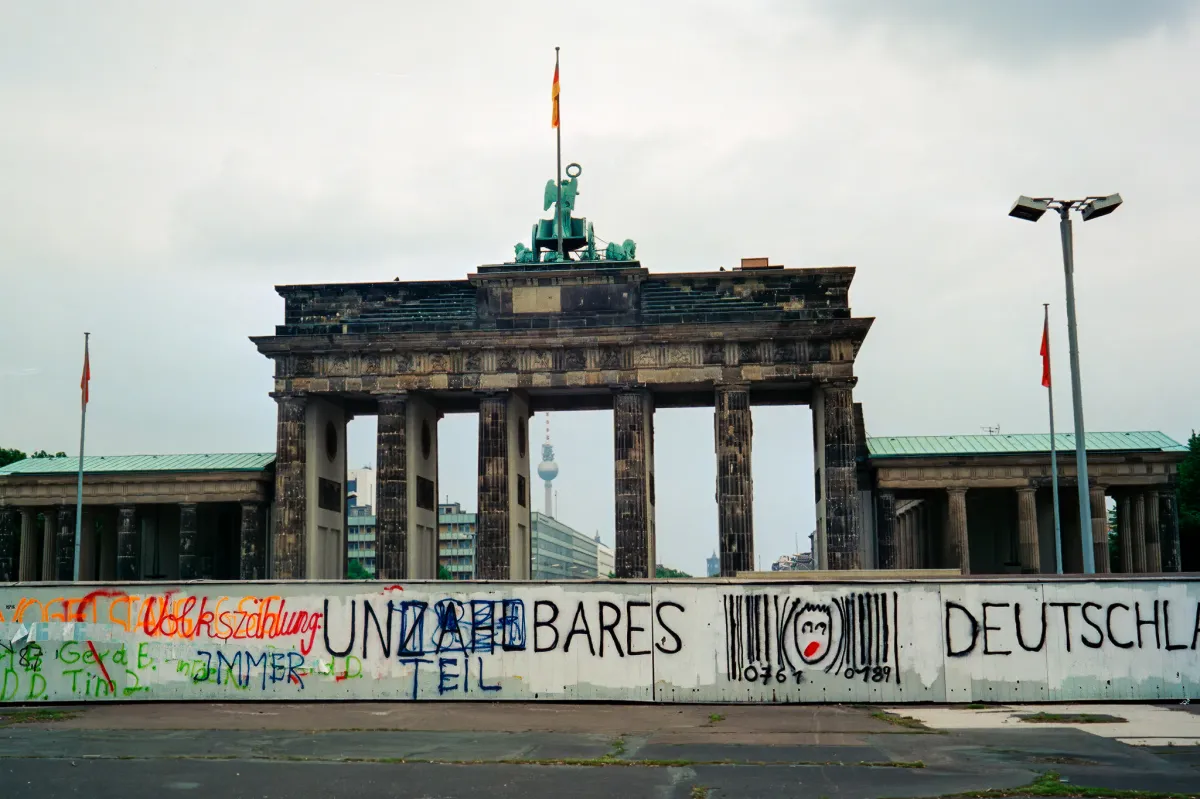
The Berlin Wall was more than just a physical structure. It represented the stark ideological divide between East and West. East Germany, under Soviet control, built the wall to prevent its citizens from defecting to the capitalist West. The wall stretched 155 kilometers (96 miles) across the city, effectively cutting off families, friends, and communities. It was a symbol of oppression, a constant reminder of the limitations imposed on freedom and human rights.
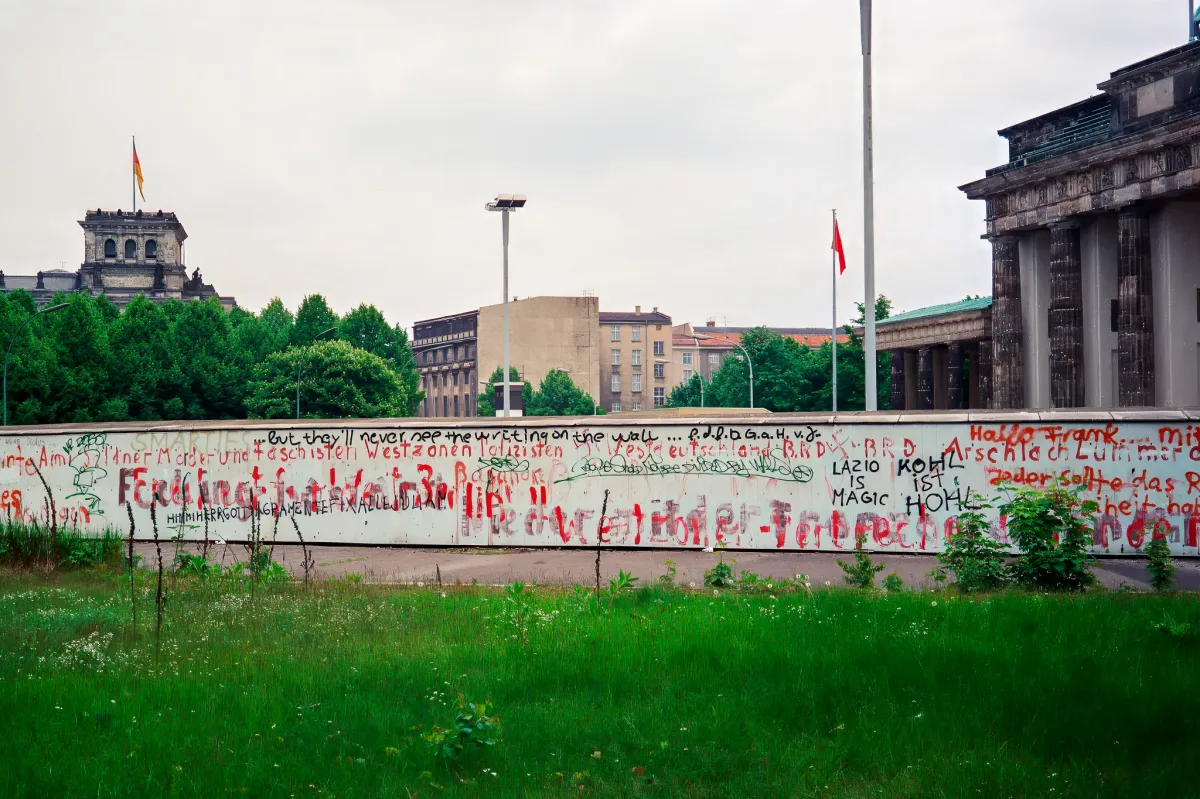
For nearly three decades, the Berlin Wall remained a symbol of the tense standoff between two superpowers and the ideological struggle of the Cold War. But it was also a testament to the resilience and determination of the human spirit. Despite the immense challenges it posed, the wall couldn’t extinguish the desire for freedom that burned in the hearts of those affected by its presence.
Around 200 people died trying to cross from East to West Berlin and commemorations were commonplace along the wall.
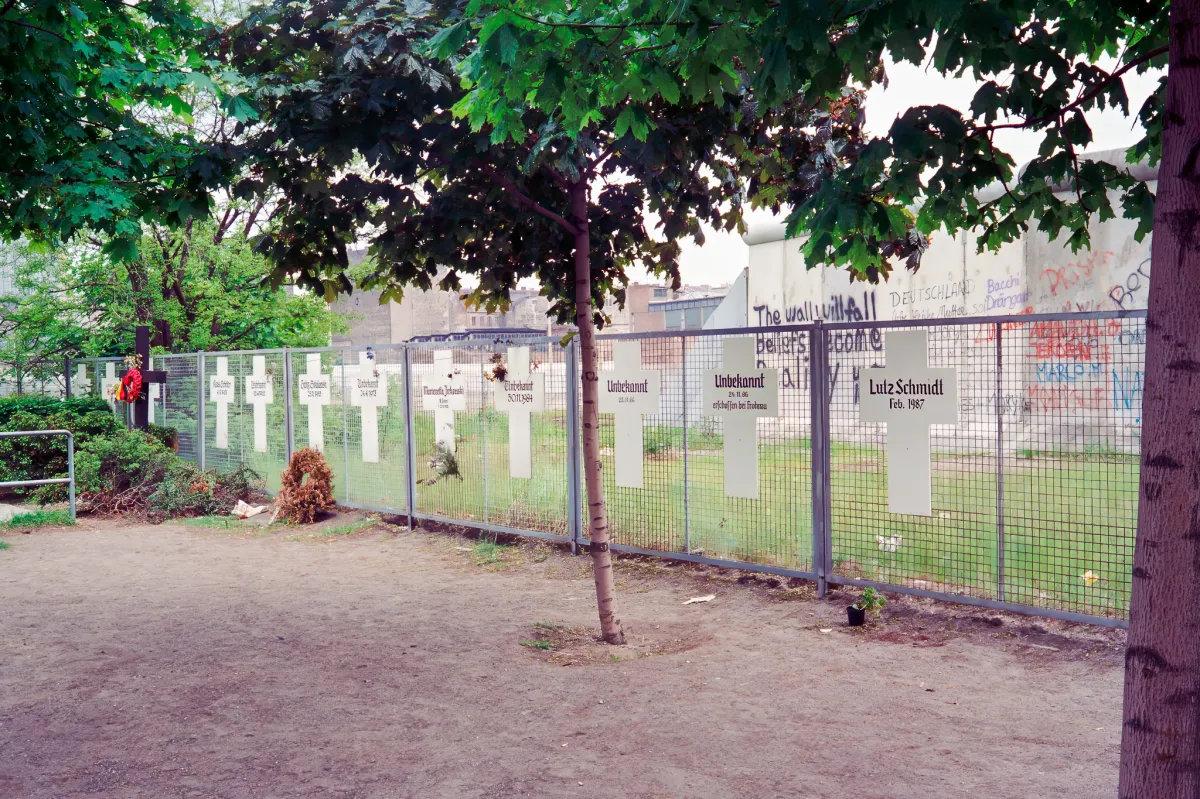
Throughout its existence, the Berlin Wall became a focal point for protests, demonstrations, and acts of resistance. The world witnessed moments of courage and unity as people from both sides of the wall came together to demand change and freedom. The wall stood as a constant reminder that the desire for liberty and unity was stronger than any barrier, no matter how formidable.
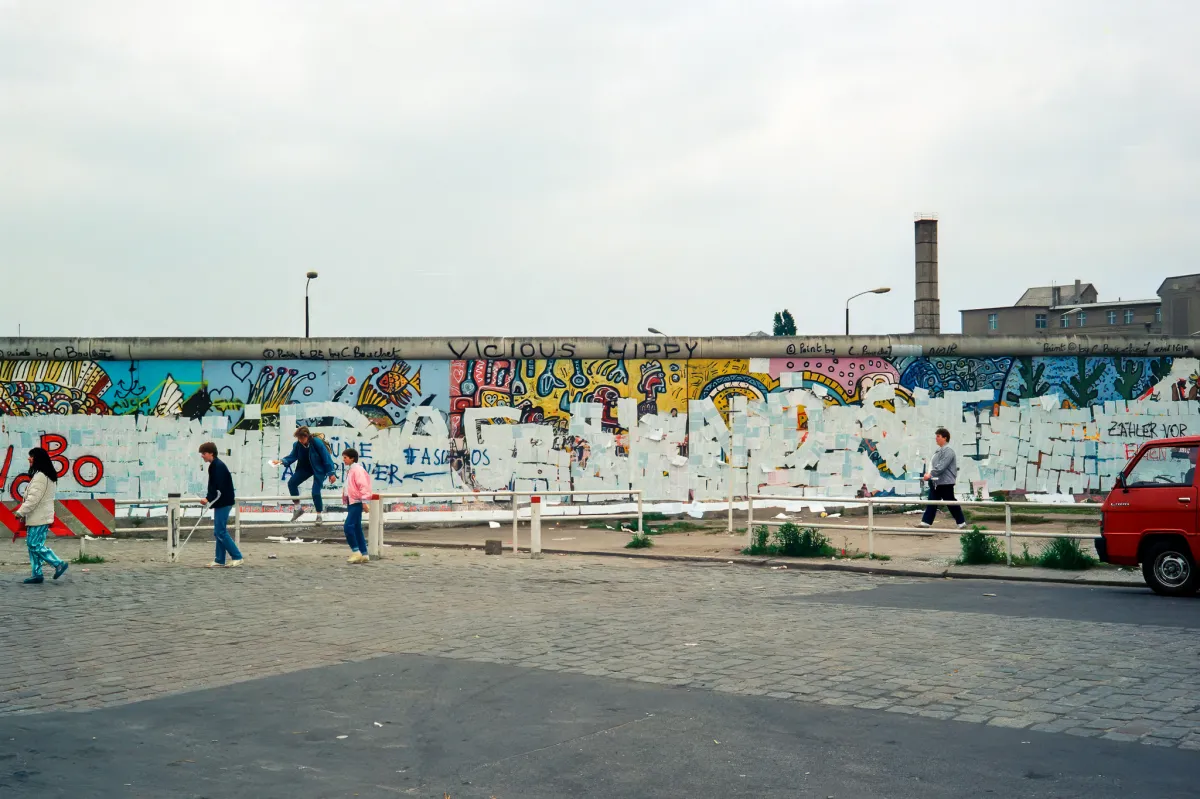
Then, on that fateful day in November 1989, the world watched in awe and disbelief as the Berlin Wall started to crumble. The fall of the wall was a moment of unparalleled joy and celebration as families, friends, and strangers embraced each other, tearing down the physical and metaphorical barriers that had separated them for so long. It marked a turning point in history, symbolizing the end of the Cold War and the triumph of democracy and human rights.
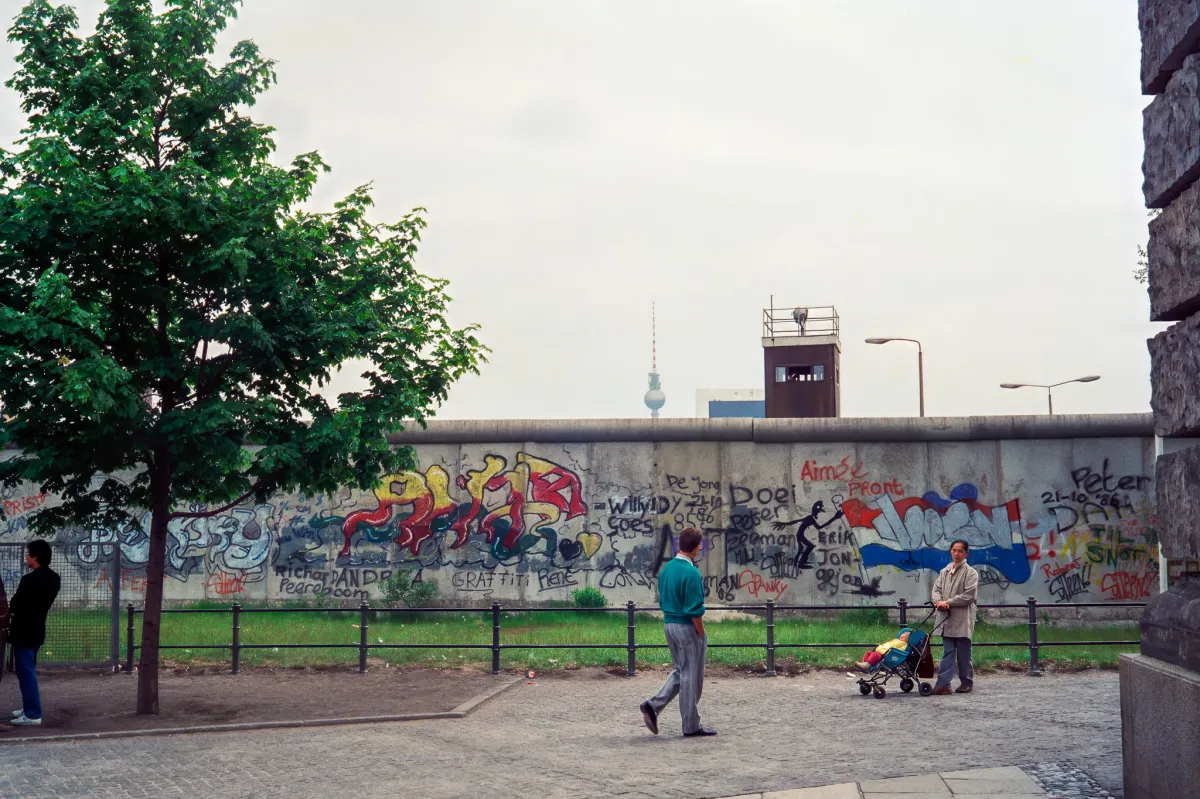
Today, a few remnants of the Berlin Wall serve as a reminder of the power of unity and the consequences of division. The East Side Gallery, a stretch of the wall adorned with colourful murals, stands as a testament to the indomitable spirit of the people and their collective longing for peace and freedom. However, most of what you can see in these photos was torn down and no longer exists.
Graffiti with view over the ‘death strip’.
